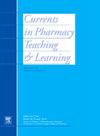通过具有成本效益的图像和视频为药学学生提供复方验证培训,最大限度地提高学习价值
IF 1.4
Q3 EDUCATION, SCIENTIFIC DISCIPLINES
引用次数: 0
摘要
背景与目的本研究旨在通过对复方无菌制剂(CSP)成品和无菌技术的自我评价和同行评价,评估图像和视频复方验证在培养药学专业学生无菌复方技能方面的有效性。目的是提高对复合原则的遵守,并为学生在持续质量改进实践中建立基础。教育活动和设置图像和视频合成验证由安装在层流工作台的平板电脑支持,并用于捕获CSP最终产品的照片和无菌技术的视频,以供自我和同行评估。55名二年级药学学生从事无菌配药技能的实践。通过事后调查收集学生对图像和视频复合验证训练的观感。研究发现学生自我评估的准确性很高:100%确定正确的药物,96%确定稀释剂,100%确定静脉输液袋溶液和体积。自我评估显示,66.7%的人会分配他们的CSP最终产品,33.3%的人会重新复合。大多数学生对图像和视频复合验证培训持积极态度,88.8%的学生认为它易于使用,86.7%的学生认为它有助于理解csp, 88.9%和91.1%的学生分别认为它对自我评估和同行评估有价值。此外,86.7%的人认为它鼓励了对无菌技术的批判性思考。综上所述,在技能实验室无菌配药课程中整合图像和视频配药验证可以提高学生的配药技能,提高配药实践的准确性,并促进持续质量改进的文化。本文章由计算机程序翻译,如有差异,请以英文原文为准。
Maximizing learning value through cost-effective image and video compounding verification training for pharmacy students
Background and purpose
This study aimed to assess the effectiveness of image and video compounding verification in developing pharmacy students' sterile compounding skills through self- and peer-assessments of compounded sterile preparation (CSP) final products and aseptic technique. The purpose was to improve adherence to compounding principles and establish a foundation for students in continuous quality improvement practices.
Educational activity and setting
Image and video compounding verification was supported by a tablet-computer mounted in a laminar airflow workbench and used to capture photos of CSP final products and videos of aseptic technique for self- and peer-assessment. Fifty-five second-year pharmacy students engaged in hands-on practice of sterile compounding skills. Students' perceptions of the image and video compounding verification training were collected through a post-survey.
Findings
The study found high accuracy in students' self-assessments: 100 % identified the correct medication, 96 % the diluent, and 100 % the IV bag solution and volume. Self-assessment showed 66.7 % would dispense their CSP final product, while 33.3 % would re-compound it. Most students viewed the image and video compounding verification training positively, with 88.8 % finding it easy to use, 86.7 % seeing it as useful for understanding CSPs, and 88.9 % and 91.1 % finding it valuable for self- and peer-assessment, respectively. Additionally, 86.7 % felt it encouraged critical thinking about aseptic technique.
Summary
These findings suggest that integrating image and video compounding verification into a skills laboratory sterile compounding curriculum can enhance students' compounding skills, improve accuracy in compounding practices, and promote a culture of continuous quality improvement.
求助全文
通过发布文献求助,成功后即可免费获取论文全文。
去求助
来源期刊

Currents in Pharmacy Teaching and Learning
EDUCATION, SCIENTIFIC DISCIPLINES-
CiteScore
2.10
自引率
16.70%
发文量
192
 求助内容:
求助内容: 应助结果提醒方式:
应助结果提醒方式:


